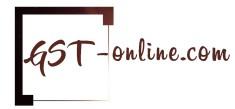A Judgement would have a far-reaching impact on refund in inverted duty structure involving refund on inputs being raw material, store spares or packing material. The Judgement deals with
-How to analyse the condition that rate of tax on inputs is more than rate of tax on output in case of multiple output supplies.
-Can refund be rejected in cases wherein even though rate of tax on inputs was more than rate of tax on output on the premise that “More or less” output and input are of same rate or Inputs on which refund is claimed were in stock
-Can Refund be rejected on any other ground by the appellate authority which was not covered by the adjudicating authority
S.No | Subejct | Held |
1 | Petitioner’s contention | Packing material, consumables etc. used as raw material qualified as input in terms of statutory provisions. For refund under inverted duty, there need not be one-to-one correlation between inputs or outputs but a rationale principle of comparing average rate of duty of inputs with the rate of duty of outputs. Other grounds of rejection that refund was due to high input purchases and they were in stock during the claim period is not referable to statutory scheme as it does not talk of stock, but only refers to output turnover |
2 | Facts | Description |
3 | Observed | Plural Use of words “inputs” and “output supplies”- Proviso (ii) to Section 54(3) provides “where the credit has accumulated on account of rate of tax on inputs being higher than the rate of tax on output supplies”. The language of the provision signifies plurality of both inputs and output supplies. Use of the word, “inputs” signifies that there may be more than one input and it was not possible to read “inputs” as “input” alone. Thus, refund of unutilised ITC due to inverted rate cannot be restricted to those cases of single input and single output supply. |
Held | Where tax rate on some inputs is higher than tax rate on output supplies, and where outputs are more than one, statutory scheme of refund based on inverted duty structure shall be applicable and, refund claim would be determined based on computation prescribed in Rule 89(5) and not based on any other mode of computation. |



